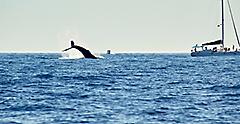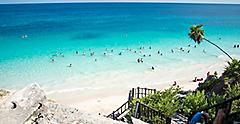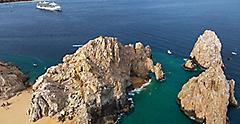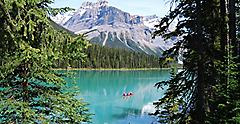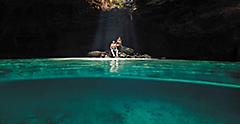Things To Do In Cabo San Lucas
Take A Cruise To Baja Peninsula For Whale Watching
The capital of the Baja Peninsula, Cabo San Lucas sits at the junction of the Sea of Cortez and the Pacific Ocean, waters that serve as migratory stops and breeding areas for humpback and gray whales. With Mexico cruises from Los Angeles you can spend the perfect day in Cabo on a whale watching excursion in the tropical breeze, on the Mexican coast's sun-drenched waters.
When To Go Whale Watching In Cabo San Lucas
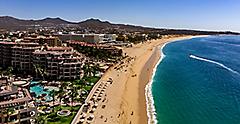


Additional Tips On Whale Migration Patterns In Cabo
So, what whales can you actually expect to see? Whale watching means getting up close and personal with some of the ocean's most awe-inspiring wonders of the natural world. Humpbacks make up the majority of Cabo's whale population, identifiable by their dark hue and playful nature. They migrate to Cabo San Lucas from November through April, spending the entire season there.
Gray whales are another frequent visitor off the coast of Cabo San Lucas, especially near Magdalena Bay from early January through mid-April. They travel in small groups and are often spotted close to shore — you might even be able to catch a glimpse of them from land.
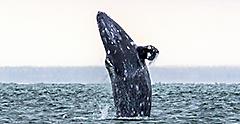


Essential Tips For Whale Watching
Your level of preparation can either make or break your whale-watching experience. Here are some tips to keep in mind before you go.
Pack Smart
Just because you're under the Mexico sun, doesn't mean you're immune to the chilly ocean wind. It's always colder on the water than it is on land, so make sure to pack layers to stay warm. That includes sweatshirts, gloves, hats that cover your ears, and even a blanket. Waterproof clothing like jackets and shoes are also smart, as you might not stay as dry as you'd think.
Wear Sunscreen
You might be spending the day out on the water, cooled by the sea breeze and occasional ocean spray, but the sun's just as strong on the boat as it is on the beach. In Cabo, the sun shines year-round — don't let it be your downfall. Nothing ruins a vacation more than a nasty sunburn, so don't skip the sunscreen before your whale-watching excursion.
Put The Camera Down
There'll be plenty of time to take photos, so don't forget to unplug and soak in the moment. In the age of smartphones, "bring a camera" is advice no one needs to hear. Of course you'll have a camera on hand to capture every majestic whale-watching moment; the real trick is knowing when to put the phone down. You're in Cabo. You're with friends or family. You're surrounded by some of the most beautiful creatures on the planet.
After all, the only thing better than watching a humpback whale leap out of the water through your iPhone lens is watching it with your own eyes.
Manage Your Expectations
Watching whales doesn't come with any guarantees. You shouldn't expect to board the ship, take out your camera, and immediately see dozens of whales leap out of the water on cue. Whales aren't enlisted actors performing on a stage for our amusement — they're simply living their lives down there. Whale watching in Cabo San Lucas means observing whales in their natural habitat, so patience is key.
Luckily, Cabo's whale population during breeding season is quite high, and it's extremely likely you'll see plenty of whale activity. Just remember that it might take a while to see your first whale during a whale watch, and that whale might not be doing somersaults and backflips.
Gear up for the adventure of a lifetime on the stunning waters of the Baja Peninsula, home to some of the most majestic creatures our world has to offer. You won't want to miss this unique whale-watching experience.
Get Royal Deals, Sign Up Today

Getting There
Best Cruises From LA
Whale-watch your way through Cabo on a cruise to Mexico from Los Angeles.

